This is a scout report of Kostas Tsimikas’s style of play. After some good performances during the past season against teams like Bayern Munich, Arsenal FC, and Wolverhampton Wanderers, the Greek player drew the attention of Jurgen Klopp. Liverpool FC bought him from Olympiakos FC for 11.75 million pounds. In this tactical analysis, I am going to analyse the way that Kostas Tsimikas is playing with and without the ball. Throughout this analysis, we will see where he stands compared to Liverpool and their players, as Tsimikas has to compete with experienced left-backs like Andrew Robertson.
Tsimikas’ style as a full-back
Tsimikas is a medium-height player with athletic shape. He has exceptional stamina that allows him to fit the role of the modern full-back that can go up and down the left flank of the pitch. He stays wide and high on the field, and his body position when he is waiting for the ball is such that it allows him to receive the ball in a dynamic way to drive with it or pass it forward. Offensively, Tsimikas is a player that can support, overlap or underlap the winger. Moreover, his technique allows him to deliver high-quality crosses into the box, and if needed, he can be threatening with shots from outside of the box.
Tsimikas when his team has the ball
When his team had the possession of the ball, Tsimikas positioned wide and high on the field. That was because Pedro Martin, the manager of Olympiakos FC, wanted his full-backs to participate in the offensive part of the game. If the full-backs could not support that kind of play, then the manager’s tactics would have been useless and the gaming plan difficult to be applied. Hence, during the last season, we could notice Tsimikas taking a wide positioning that was next to the sideline of the field. On that way, Tsimikas was trying to stretch the opponent’s lines. By taking such a position, the full-back could play the ball forward, as the opposition has more empty space for a pass in-between the lines and in the channels.
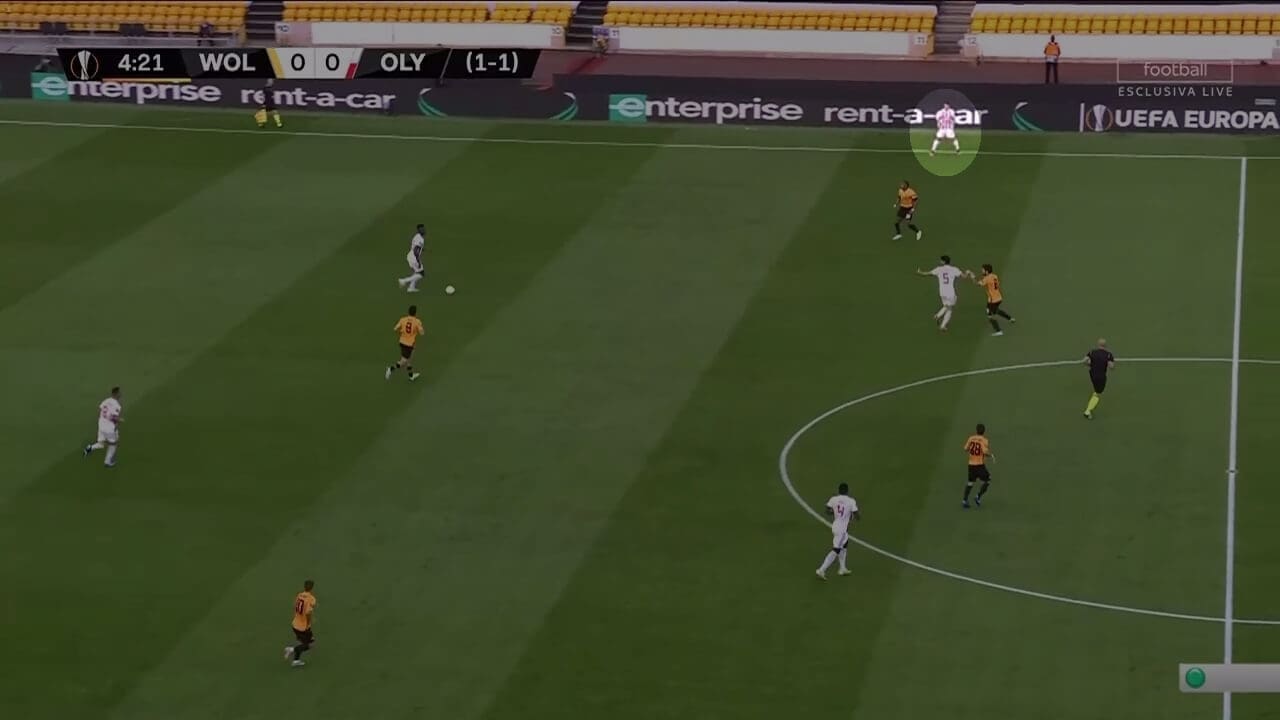
Moreover, Tsimikas as a player is scanning the area before receiving the ball. This is very important for a player because it gives the advantage of knowing where the opponent and the teammates are. That gives a lead to Tsimikas because he knows where to pass before receiving the ball. By knowing in advance where to pass the ball, he also does not allow the opposition much time to organise their defensive structure.
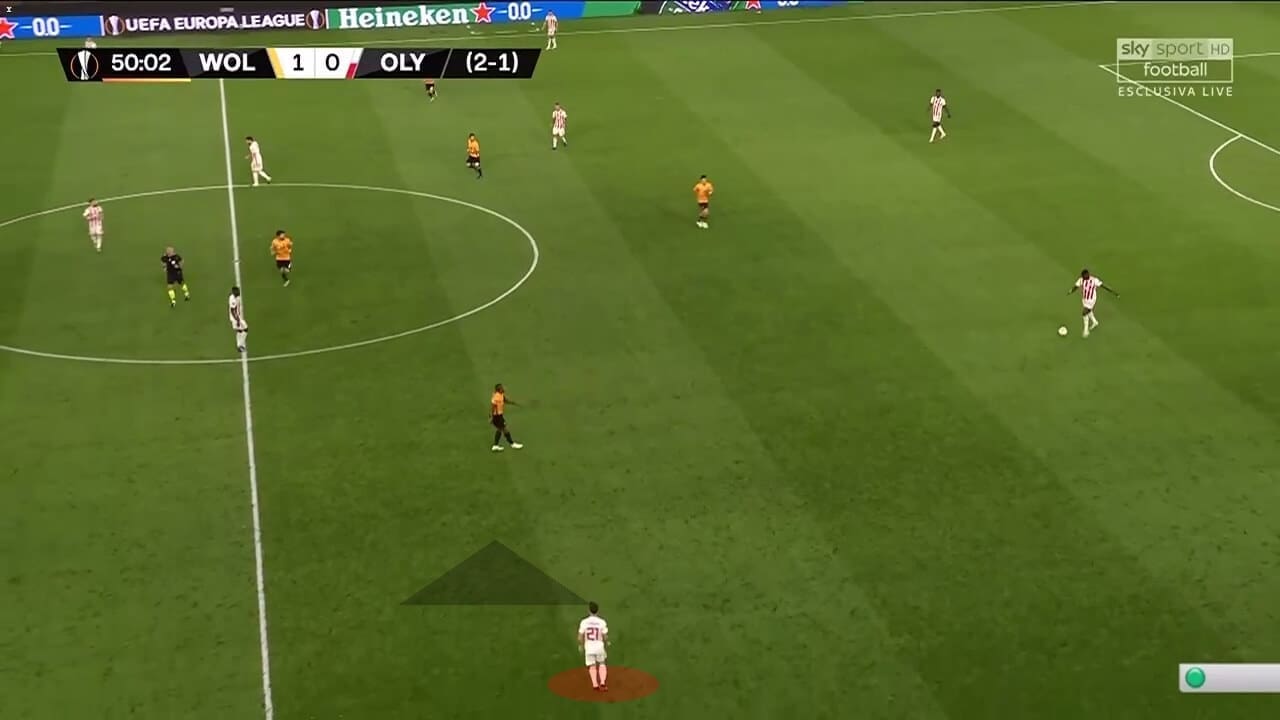
Furthermore, Tsimikas has such a body position that allows him to receive the ball in a dynamic way, which helps him to go forward instantly. This gives him an advantage as he is prepared to drive or pass the ball forward. With this kind of body positioning, Tsimikas can break the opponent’s pressure high on the field easier and could expose empty spaces in the channels and in-between the defensive and midfield lines. In the picture below, we can notice Tsimikas looking for the ball, but at the same time, he has an “open” body position, Notice how his body is oriented to go forward, which is going to help him to receive the ball and drive with it without losing time.
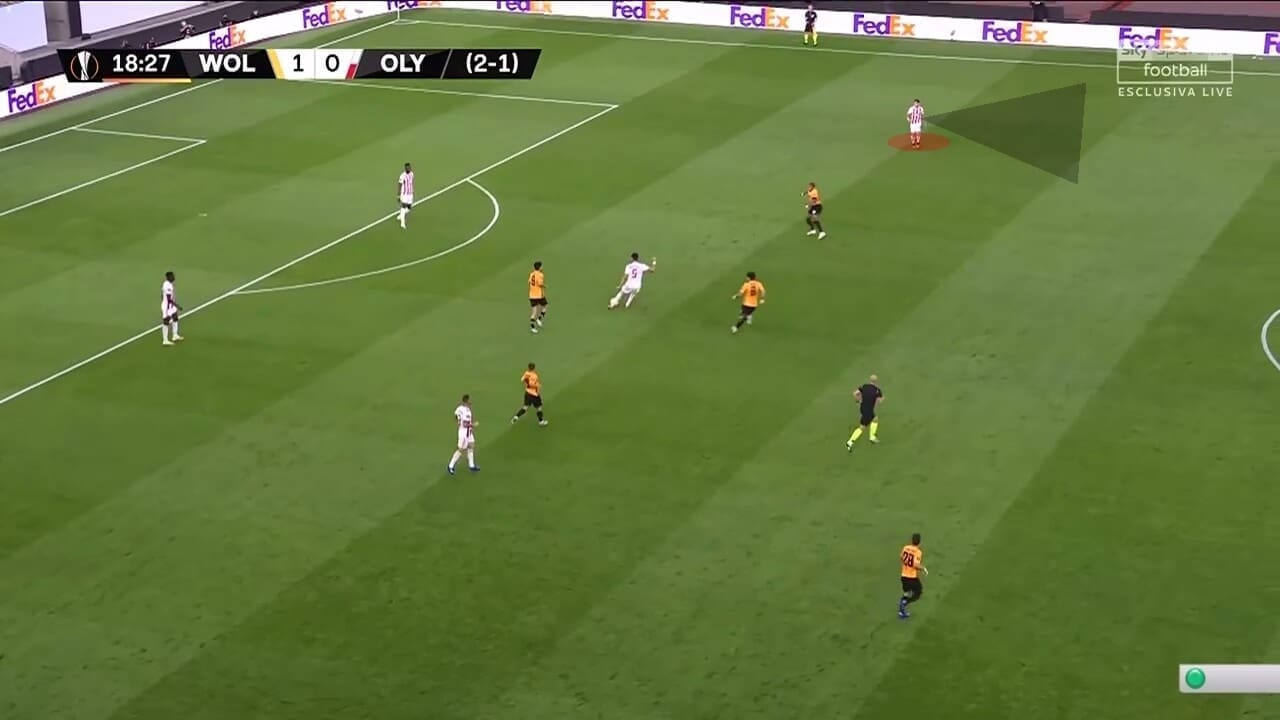
Stepping up higher on the field, we can see that Tsimikas has the ability to pass the ball forward, which is something important for a player that is coming from the defensive line. It is crucial for a team that wants to play a dominant style of football, which starts from the back, to have players with the ability to break lines with their passes. Tsimikas’ wide positioning, his “open” body positioning, and his scanning before receiving the ball help him minimize a wrong passing option. So, Tsimikas is a player that has the ability to break lines with forwarding passes.
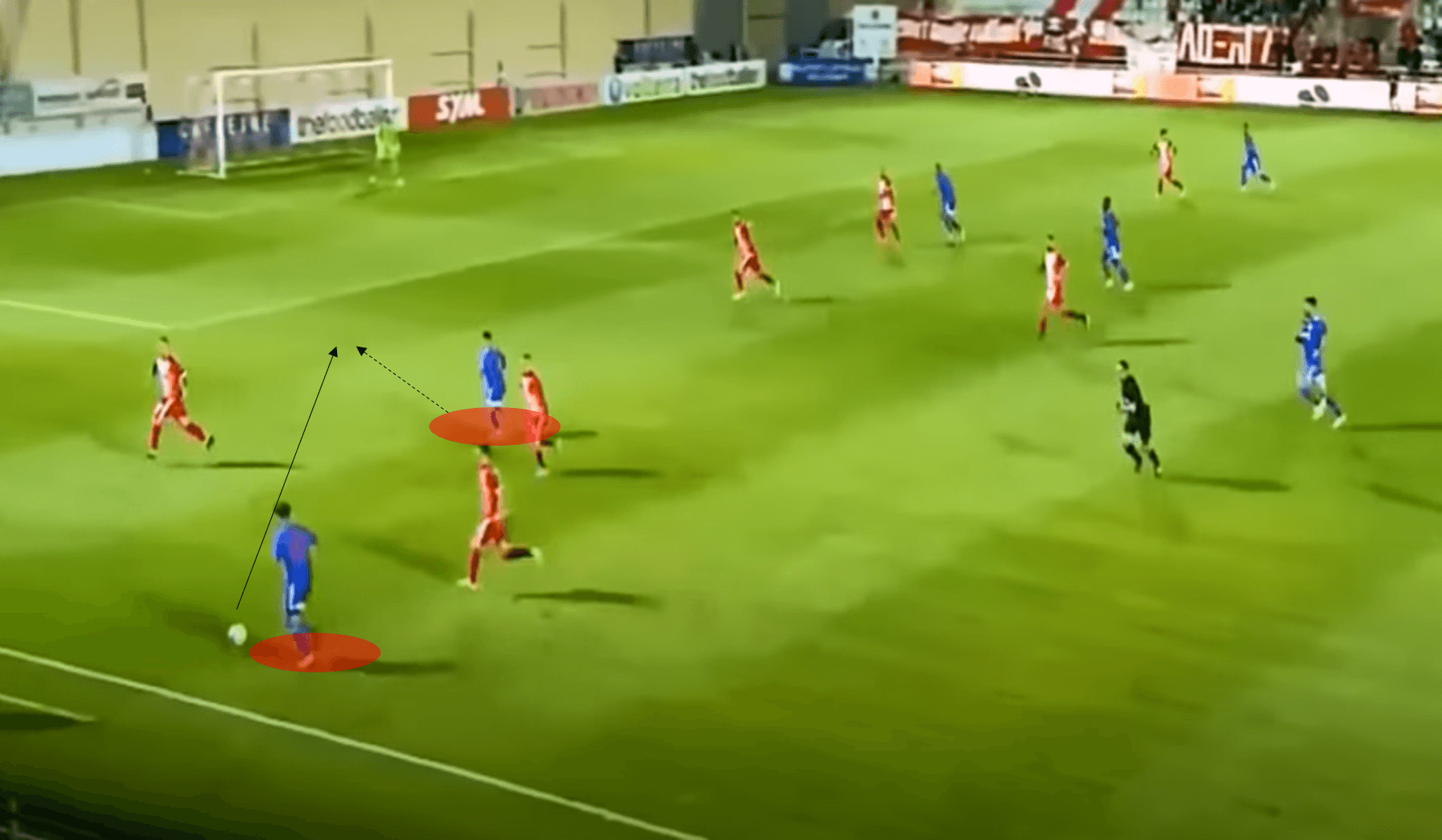
Tsimikas’ pace allows him to step up high on the field quickly and support the winger. Tsimikas can overlap and underlap and can be very good at combination plays. The cooperation between units is important in modern football, as one of Tsimikas’ responsibilities as a full-back is to participate offensively in the game. If the full-back cannot overlap or underlap the winger, then most of the time he is in a disadvantageous position. Tsimikas’ stamina and pace let him be consistent in supporting the winger offensively, and this is one of the reasons why he makes a difference on the field.
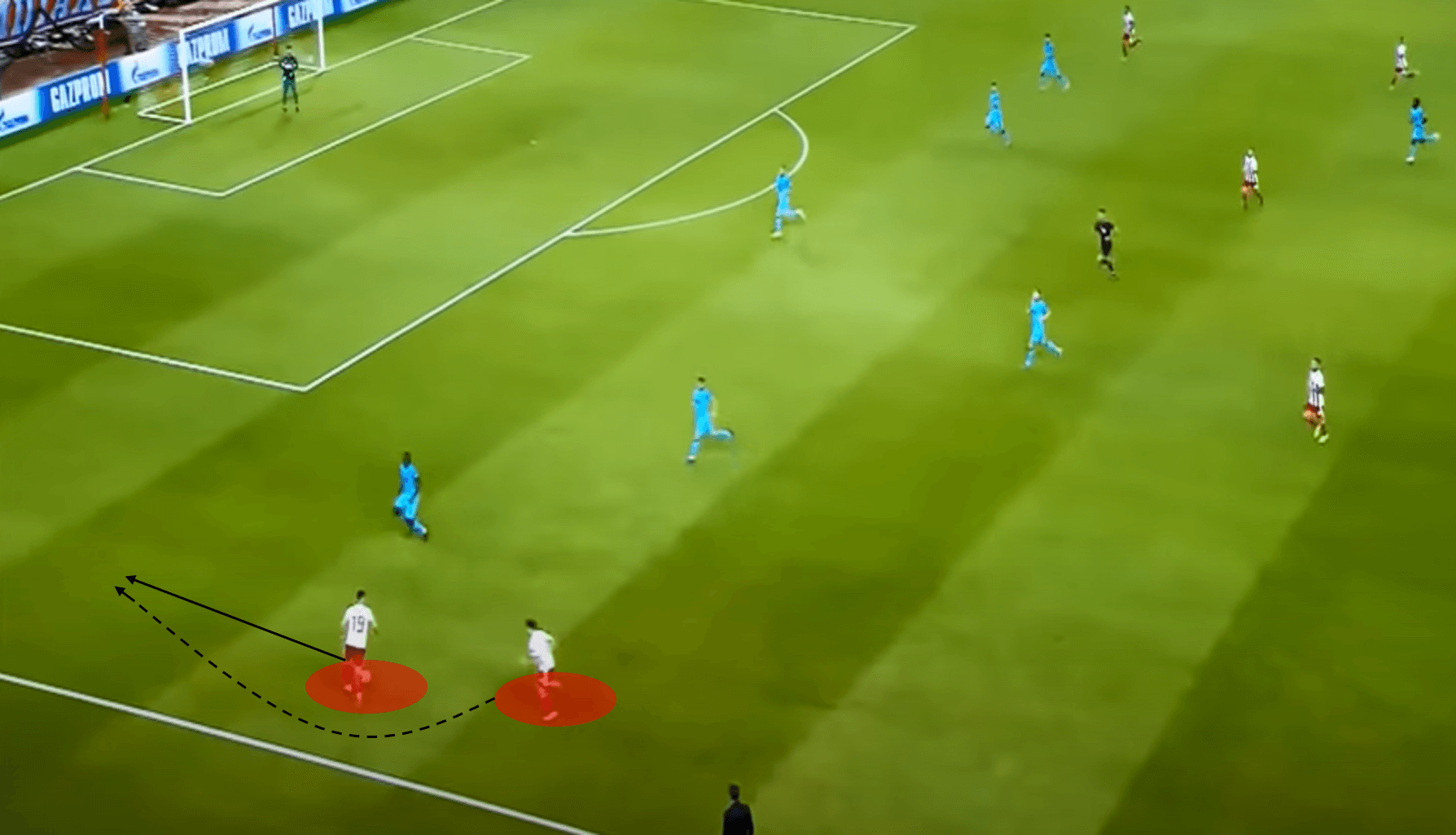
Tsimikas has the ability not only to overlap or pass the ball forward but also has the ability to drive the ball into empty spaces. Players must have the ability to read the game and see where the free space is and take advantage of it. This is what Tsimikas is doing: if he is not able to pass the ball to the winger of the central midfielder, he will try to scan for possible empty spaces and take advantage of them. It is important for a player to know when he has to drive the ball into empty spaces. On that way, the opponent’s defender is forced to make a choice: he either tries to stop the player that entered his area or holds his position and waits for support in order not to be at a numerical disadvantage. In the picture below, we can see Tsimikas driving the ball into an empty space. This has the purpose of dragging the opposition’s players to mark. At the same time, his teammates take advantage of the situation and create a one-versus-one situation on the flank, and a two-versus-two situation outside of the box.
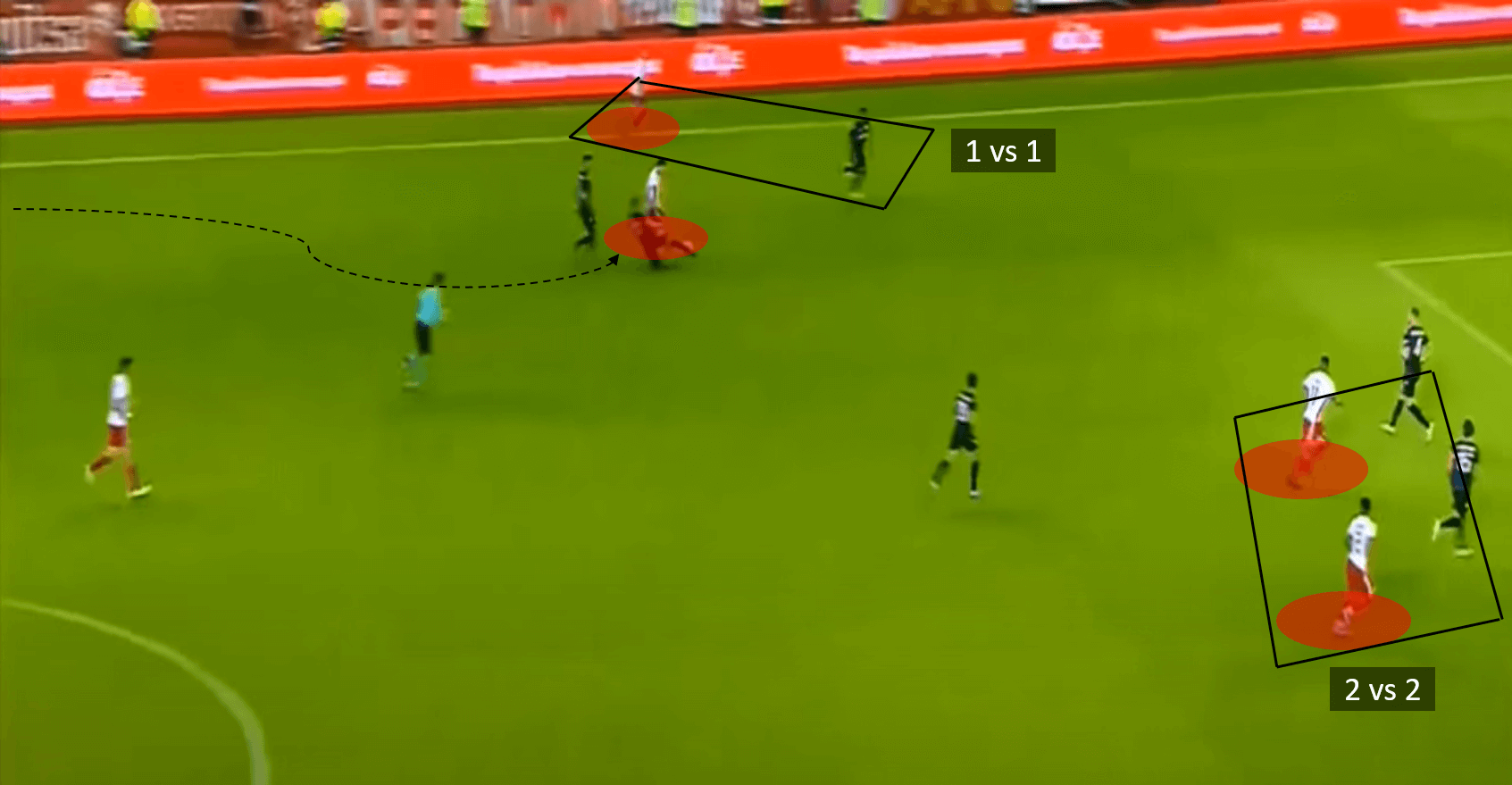
Tsimikas has great abilities on the crossing. He can support his team efficiently in the final third of the field with very good deliveries from wide areas. Moreover, Tsimikas has the ability to cross from different areas of the field: he can cross from the endline when he overlaps the winger high up the pitch, but his early crosses could be very effective as well. Early crosses could be more dangerous, as the defenders have to take care of both the attackers that are trying to take a better position into the box and the ball which moves in the opposite direction from their markers. Moreover, those kinds of crosses are difficult for the goalkeeper to come out, as there is a lot of empty space between him and the defensive line. For that reason, these crosses should target the area between the penalty spot and the goalposts with vertical movements from the strikers. So, just an early cross sometimes could be enough to cause confusion into the box that a good striker could benefit from.
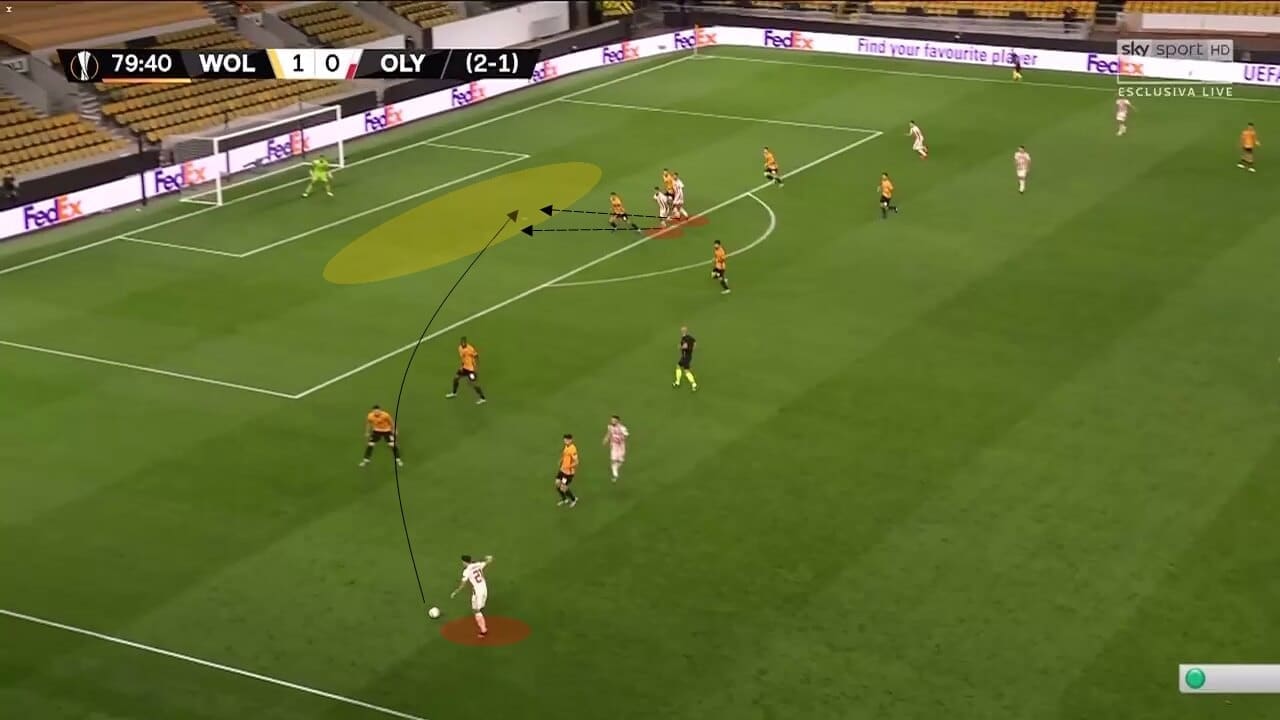
Tsimikas when his team does not have the ball
When his team is not in possession, Tsimikas has a good defensive transition. His first reaction when his team is losing the ball is to return and contribute instantly to the team’s defensive duties. That is very important for a full-back like Tsimikas because of his role within the team: he is a full-back that participates actively in the offensive part of the game.
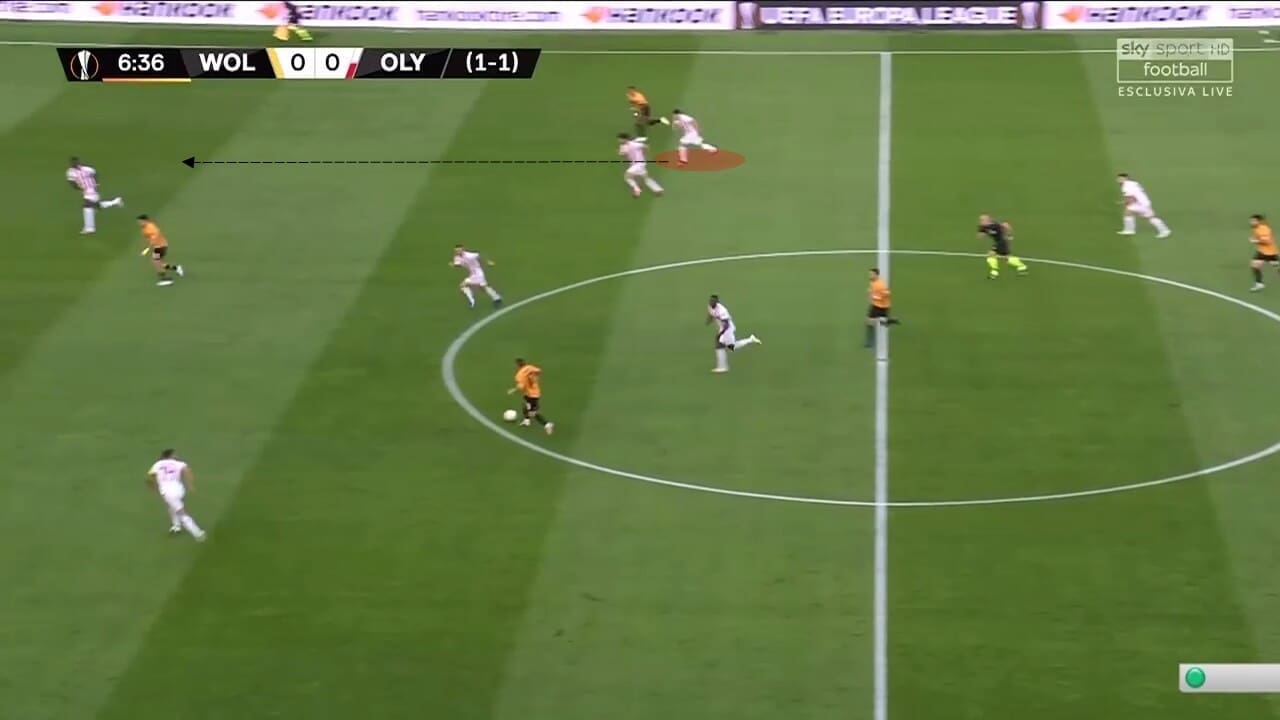
Despite his quick and good reaction, his high position could cause problems in wide areas against teams that know how to expose that empty space on counterattacks. That is a problem that most of the time is not related to players but to the manager’s tactics: when a manager is trying to be dominant with both full-backs high supporting and overlapping the wingers, the opponent’s team could take advantage of that space in wide areas when counterattacking.
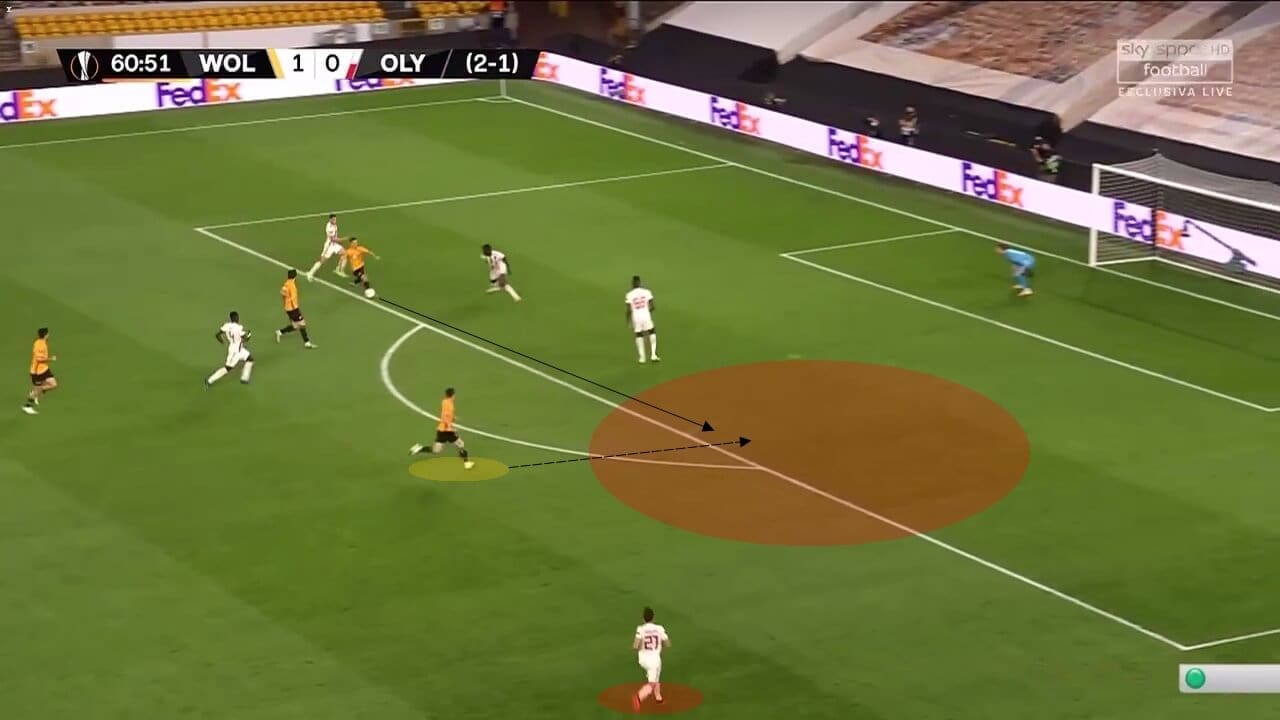
Despite not being the most muscular player in the field, Tsimikas has an athletic build and know-how about using his body. It is very important for a full-back to have knowledge on how to use his body, as full-backs face different types of wingers. Some of them are more physical, while others have more pace and speed. On both occasions, if full-backs know how to use his body, they can take advantage of various situations and stop the winger or win fouls for their team. In the picture below, we are noticing Tsimikas using his body to stop Traore, one of the most physical players of the EPL.
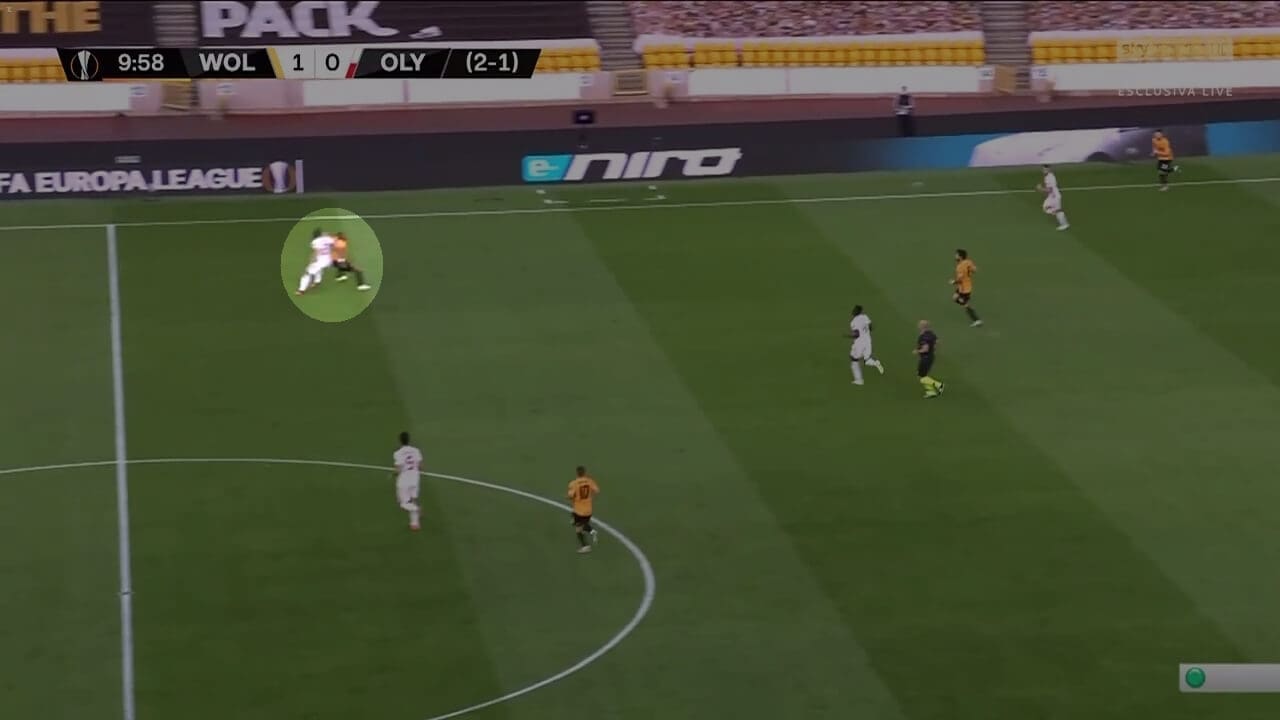
Here we can see Tsimikas using his pace to put his body between the ball and the attacker. We can notice here how Tsimikas is using his body and is trying to win a foul for his team against an opponent that is more physical than him.
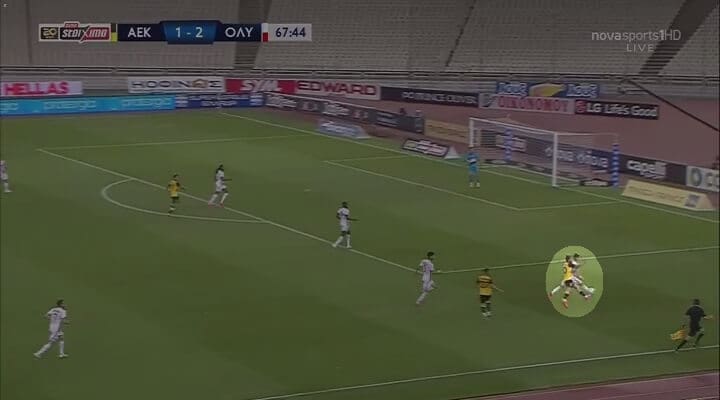
Tsimikas’ positioning is good when his team is defending in an organised manner. He is positioned in such a way that he is controlling the player that is trying to move in behind the defensive line. For a full-back, this part of the game is vital, as the opposition will often try to put the ball in behind the lines with long diagonal balls. Moreover, Tsimikas is positioning himself in such a way that he is ready to go wide and be part of the counterattack in the offensive transition when his team regains control of the ball.
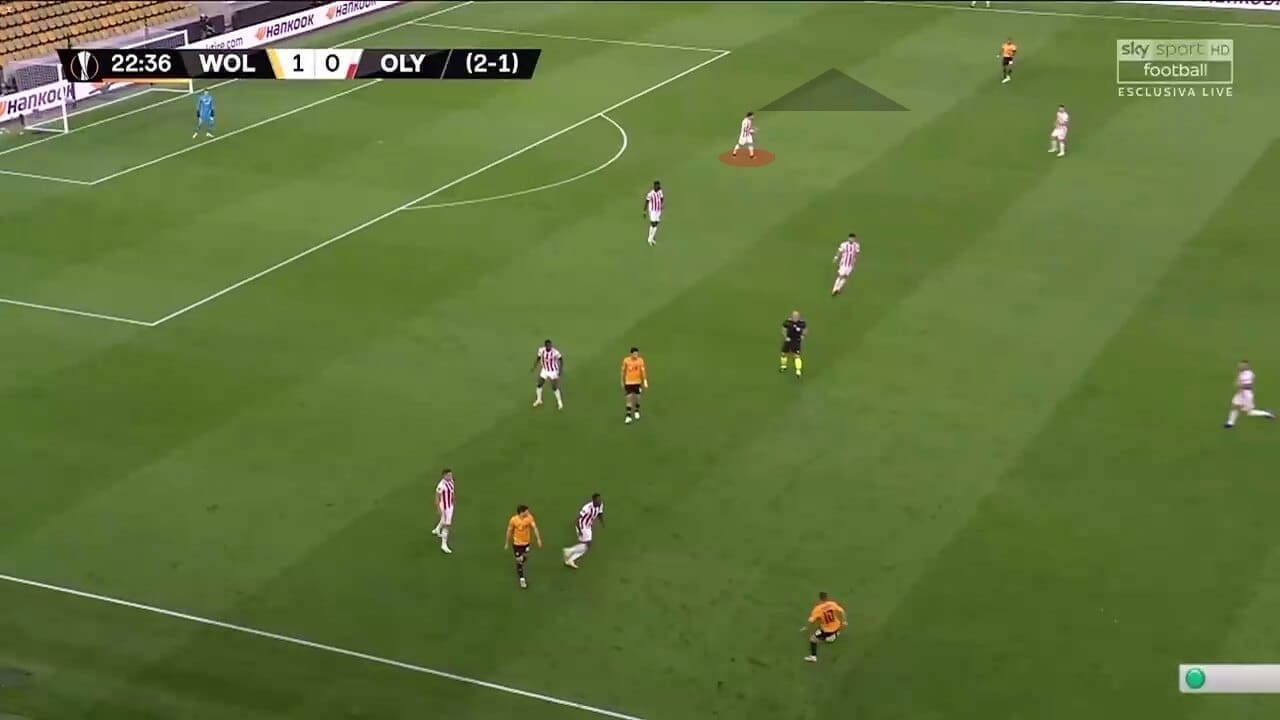
In the picture below, we can see Tsimikas taking a position that can support his teammates defensively. At the same time, he can go wide and high and support his team offensively on counterattack situations.
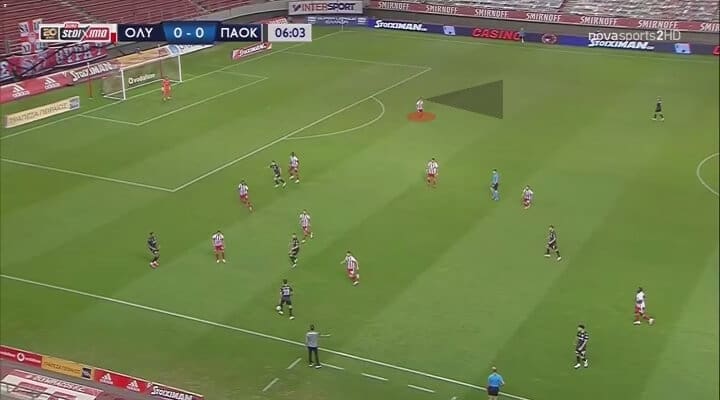
Tsimikas is also good when he has to defend. He assumes a body position that leads the carrier of the ball in the wide areas of the field and does not allow him to come inside the field. For a defender, it is very important to have the knowledge of how to face the opponent’s attackers. With those kinds of body positions that Tsimikas takes, he is not allowing the wingers to enter the box, as he is giving them just the option to go wide and try to deliver the ball. In the picture below, we can see Tsimikas closing the inner corridor for the box. So, Traore has the only option to drive the ball in the wide area and try delivering the ball into the box.
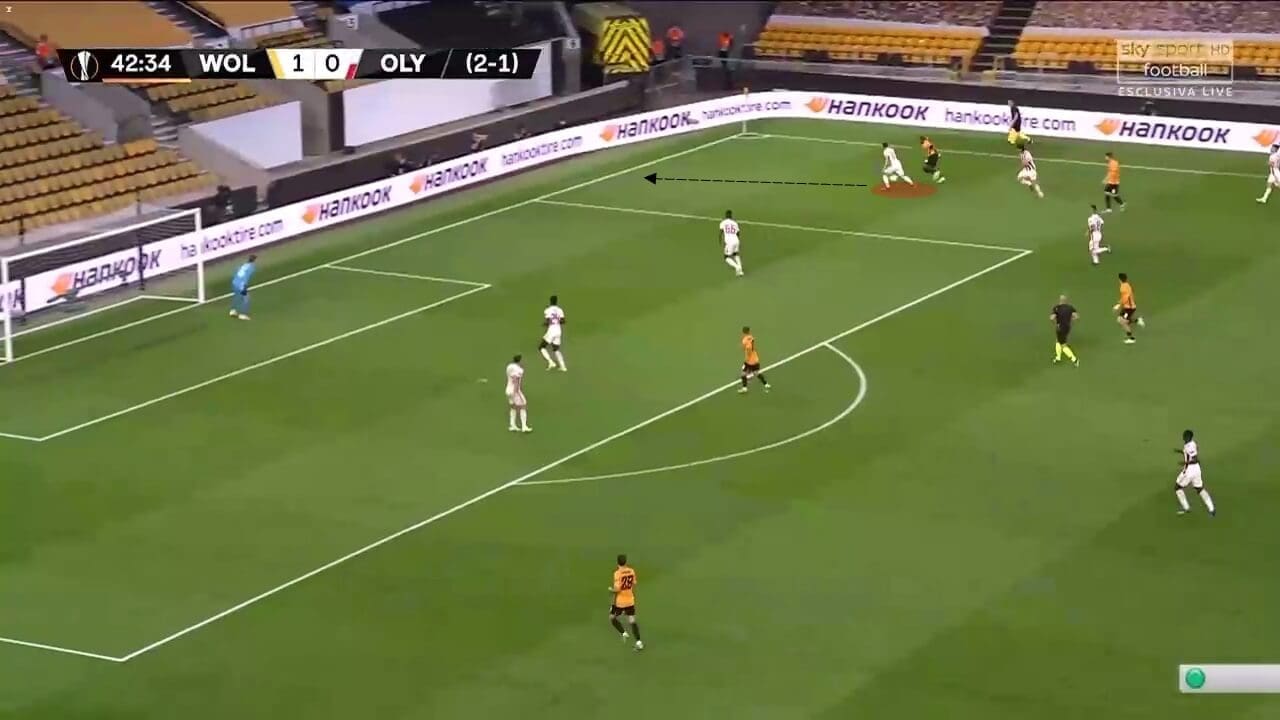
Tsimikas’ statistical analysis
In this section, we will look at Tsimikas’s statistics and compare them with those from Liverpool’s Andrew Robertson. The data come from Wyscout’s database and are from the last season. We will analyse defensive duels per 90 minutes and interceptions as far as the defensive duties. For the offensive duties, we will take into account passing and forward passing accuracy per 90 minutes, as well as successful crosses.
Starting with the defensive indicators, Liverpool FC as a team won 59.7% of its defensive duels per 90 minutes. Individually, Robertson won 57.7% defensive duels, while Tsimikas won 60.6% while he was playing for Olympiakos FC. As far as the interceptions per 90 minutes, Liverpool FC as a team had 37 interceptions per 90 minutes, while Robertson and Tsimikas had 4.28 and 4.8, respectively.
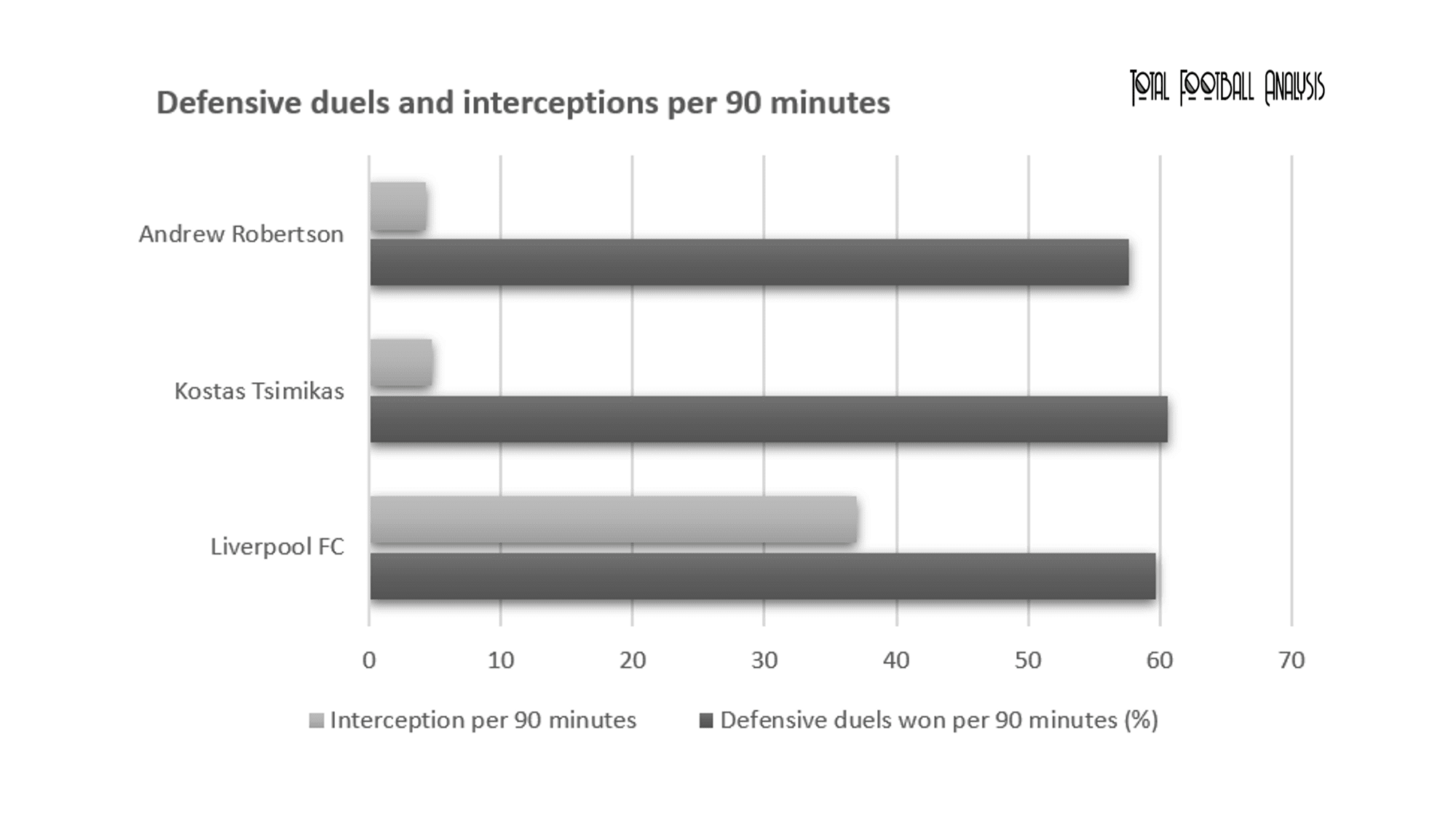
Turning the data analysis to the offensive indicators, Liverpool FC had 85% passing accuracy per 90 minutes. That means that Liverpool FC needs players that can handle a style of play aimed at dominating the opponent. Robertson was personally close to that number, as he had an 82.83% passing accuracy per 90 minutes, while Tsimikas had 77.6%. As far as the forward passes per 90 minutes, Liverpool FC had 75% accuracy per 90 minutes, while Robertson and Tsimikas had 73.64% and 72.4%, respectively. Liverpool had 31% successful crosses per 90 minutes, while Robertson had 29.73% and Tsimikas had 34% successful crosses per 90 minutes.
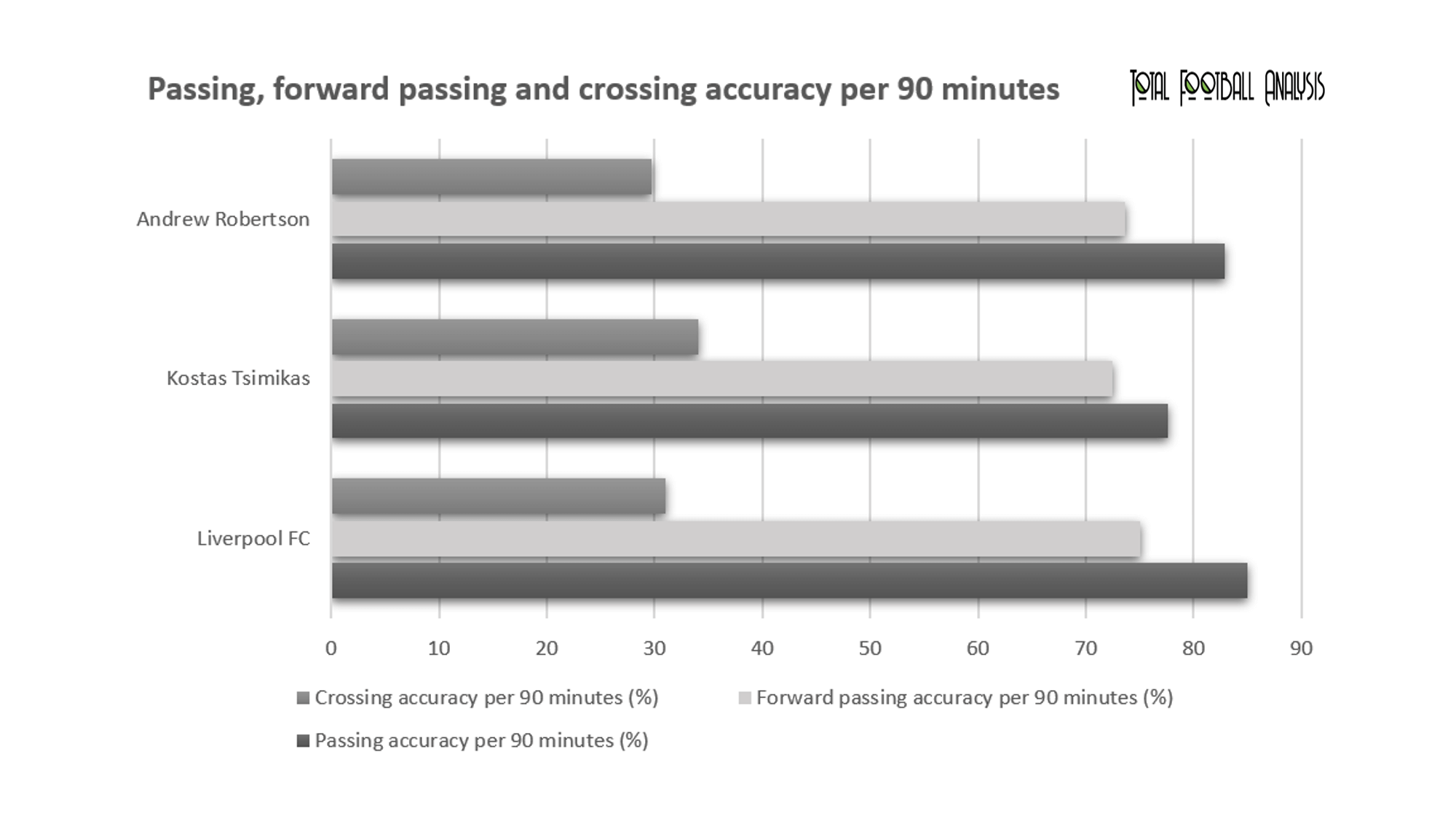
Conclusion
Tsimikas has good technical and physical characteristics, with good pace and stamina. He has the strength to go up and down the left side and support the winger efficiently. Defensively, he is a full-back that has the knowledge of how to use his body and position himself properly. His statistical analysis showed that he is a player that can compete with Robertson at Liverpool FC. We only have to see how Tsimikas is going to fit within Jurgen Klopp’s system.

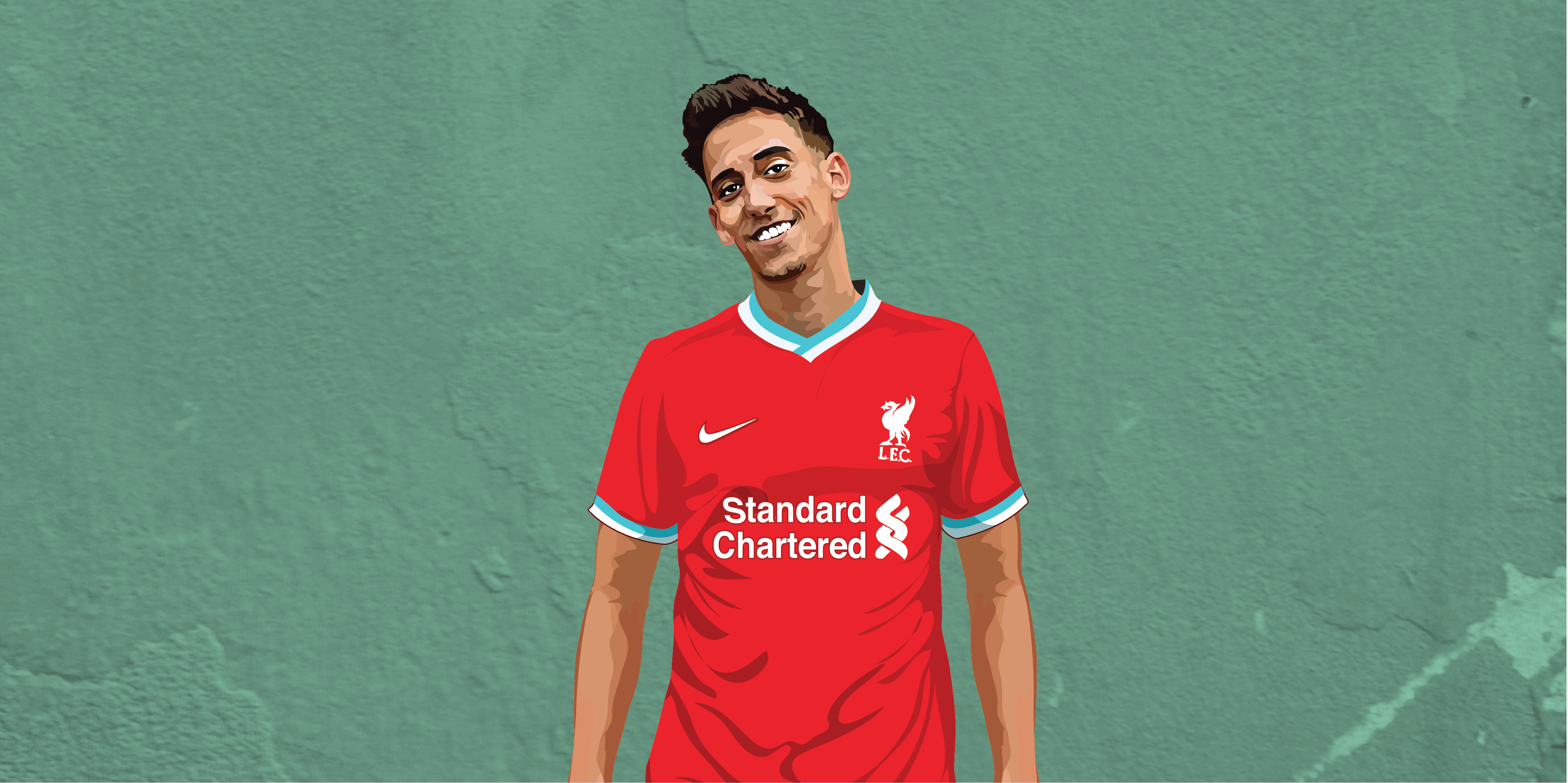



Comments